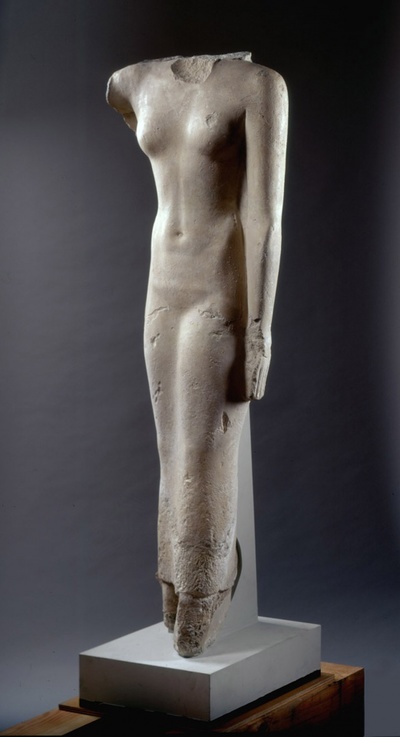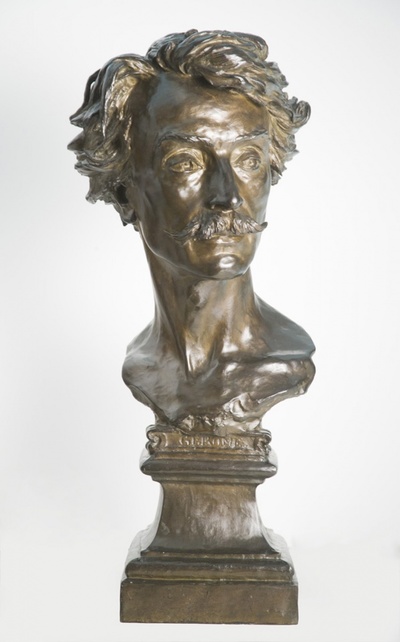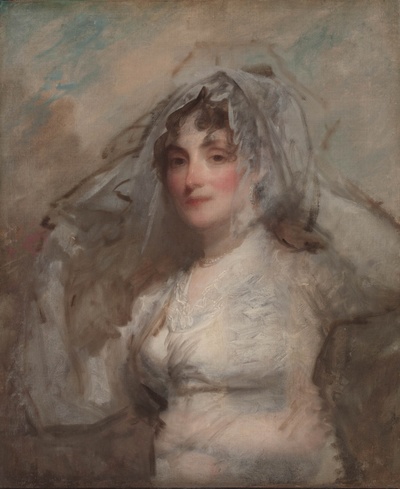INVENTING AND REINVENTING
THE WORCESTER ART MUSEUM

The Renaissance Court of the Worcester Art Museum.
Around 1900, America experienced a frenzy of museum building, fueled by the increasing wealth of local elites. As symbols of civic pride, these institutions were intended to help forge the identity of fast-growing industrial centers. “For the Benefit of All” was the standard phrase in their founding documents. This new generation of museums benefitted from tremendous financial support and favorable conditions in the art market. Not only did their curators look abroad, towards the Old Worlds, they also acquired American art. Following the Enlightenment idea that every nation has a particular identity, they proudly introduced local voices into the concert of cultures from all over the world.
The Worcester Art Museum conforms to the generation of emerging American encyclopedic museums. Founded in 1898 as a collection of plaster casts, it quickly started an aggressive and long-lasting collecting campaign. The very first acquisition, a bronze by French sculptor Jean-Baptiste Carpeaux, was immediately followed by Gilbert Stuart’s portrait of Mrs. Perez Morton (ca. 1802). Since then, bold purchases from the international art market accompanied acquisitions of American art, preferably from New England. One of many examples are the 1917 purchases of John Singer Sargent’s Muddy Alligators (1917) and Thomas Gainsborough’s portrait of his daughters (ca. 1764), another is Mary Cassatt’s The Letter (1890/91), along with a Gandhara Buddha (third century) in 1926. Yet which contrast could be more striking than that between Edward Hicks’s Peaceable Kingdom (ca. 1833) and The Royal Descendant Hetepheres (2440 BC), both of which the museum acquired in 1934.

Egyptian, The Royal Descendant Hetepheres, about 2440 BCE.
Limestone. Museum purchase, 1934.
The ambition to compete with the largest institutions in this country may have seemed a realistic yet distant perspective in the 1930s and ‘40s, when local industrialists had bold aspirations and the money to back them up. The acquisition rate could, however, not be maintained over the long run. Currently, with more than 35,000 works in its collection, the Worcester Art Museum qualifies as midsized, comparable to such institutions as the Baltimore Museum of Art, the Toledo Art Museum, or the St. Louis Art Museum, all of which were founded at about the same time. In terms of demographics, however, Worcester is highly atypical, as the population to support its ambitious collecting endeavors remains surprisingly small. The city counted 118,000 inhabitants when the museum was founded; that number has barely doubled over the years.
Given its demographic profile, the museum easily might have become an ivory tower. Yet numbers of visitation and photographs of long queues in front of the main entrance indicate otherwise. Art classes organized in the basement of the museum also ensured broad outreach. Significantly, the institution inaugurated various impressive “firsts,” qualifying it as a hotbed of innovative thinking, paralleling that of the city’s manufacturing base. The museum was the first in America to include an entire work of architecture into its collection (its purchase of a twelfth-century Chapter House from France preceded the constitution of the Cloisters in New York), it was the first in this country to present and collect photography as an art form, and the first to acquire works by Gauguin and Monet, etc.

Jean-Baptiste Carpeaux, Portrait Head of Jean-Léon Gérôme, bronze, dark patina.
Gift of the Grandchildren of Joseph Tuckerman (through Stephen Salisbury III), 1899.
Worcester supported the industrial success story of the U.S. and “outperformed” its demographic limits in the process. The art museum mirrored the city’s performance when it connected a population of predominantly European immigrants with a world stage that included their countries of origin. However, after World War II, the financial basis of old manufacturing wealth was melting away. New economic opportunities attracted an increasingly diverse population that did not fully engage with the museum. Additionally, the urban definition of Worcester changed: the city seems less defined by its prideful history, and more as part of Boston’s outer suburbs.
The success of the past—a definition of the museum reflecting Worcester and reflecting European roots alone—had become a liability. To invigorate the museum as a laboratory of identity in a globalizing world, we need to expand our reach both demographically and geographically.
When it became clear that the Worcester Art Museum could no longer compete with the big institutions, the status of a “Mini-Met” seemed like a consolation price. However, smaller scale can actually become a flexible asset as we reevaluate our capacity to tell the story of cultures in a new way. Whereas big institutions are chained by the depth of their collections to inherited notions of separate cultural identities, Worcester can emphasize connections.

Gilbert Stuart, Sarah Wentworth Apthorp (Mrs. Perez Morton), about 1802, oil on canvas.
Gift of the grandchildren of Joseph Tuckerman, 1899.
Connections can be facilitated via productive “neighborhoods” such as our compact pre-Columbian collection becoming part of a display of the Ancient Worlds. Connections become obvious through meaningful integrations of once-separate collections. Just imagine European impressionists and others next to their American counterparts! The introduction of small temporary exhibitions in a context of more permanent narration allows for connecting the dots even more suggestively. Instruments of science from the eighteenth-century cast a different light on neighboring portraits of, say, the English gentry, than art from cultures that resisted colonization or compromised with the inevitable at that time.
As we go forward, should we even stick to chronological presentations if transhistorical stories allow the art to shine more meaningfully? Which opportunities of juxtaposition are offered within and beyond the museum by the World Wide Web? As our museum begins to reinvent itself as a laboratory, these and many more questions demand to be asked.
The concept of a laboratory only makes sense in the museum if there is accountability, impact, and ownership. We have a lot of work to do, like any museum that takes its mission seriously. Beyond the preservation and collection of art, museums are about the constitution of highly flexible frameworks that promote constant rediscovery of meaning and identity.
Dr. Matthias Waschek is Director of the Worcester Art Museum.
